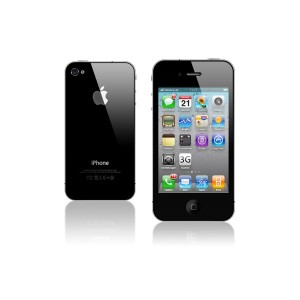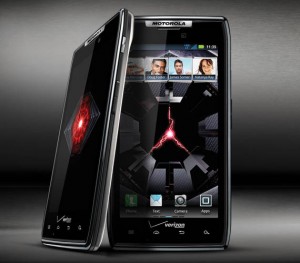As a devout iPhone user, I’ve always thought of Android devices as being much bulkier than most smartphones, and the Droid RAZR is no different. Though it is thinner than most, it still retains the same bulky aspect as its predecessors. At first I wasn’t entirely sure where to go with this as I’ve only encountered a few Android devices before. So, seeing as this was the first time I’d actually gotten this involved with any kind of droid, I decided to compare the RAZR to my trusty iPhone 4.
Display
When I placed the RAZR and my iPhone 4 next to each other, right away I noticed the difference in design. The RAZR has the look of modern technology, practically boasting a “space age” quality. My iPhone 4, while simple and sleek, looks a bit outdated and not nearly as candescent as the RAZR.
The 4.3″ RAZR screen is impressive and provides a lot more room for surfing the web, checking e-mail or opening documents, but the iPhone’s display is still noticeably superior. From a practical standpoint, the iPhone’s display is just fine for typical usage, but if you use your smartphone to look at documents or especially spreadsheets, the RAZR’s extra large screen is quite handy.
Shape/Form
The iPhone’s size and weight make it a great device to use with one hand if necessary. The RAZR, while sporting a large screen, is thin and actually lighter than the iPhone 4. Having toyed with other Android devices, I did find the RAZR to be a bit easier to handle one handed. However, I still felt the need to use two hands more often than I would with my iPhone.
The RAZR has a Kevlar back (which I was unaware of until I watched the most recent commercial) which increases durability, even though it’s very thin. I wouldn’t feel the need to get a case for the RAZR, but I did with the iPhone 4 because of the number of friends I know that have dropped theirs to much dismay in the past.
Camera
iPhone camera technology has always been the leader of the pack. I enjoy taking pictures and now no longer feel the need to drag my actual  camera around with the quality images the iPhone 4 is generating. Also, given the 1080p video capabilities along with the quick response vs the sluggish RAZR optics and this one was an easy win for the iPhone.
camera around with the quality images the iPhone 4 is generating. Also, given the 1080p video capabilities along with the quick response vs the sluggish RAZR optics and this one was an easy win for the iPhone.
I will say that the picture taking options of the RAZR are much more diverse than the iPhone 4, but for those of us that want to capture the moment, messing with settings means you’ve missed the shot! The iPhone is the clear winner at making quick automatic adjustments.
Navigation
Having toured with my band and used my iPhone multiple times for navigation, I always found it disheartening that Apple never included “turn by turn” as an option for their maps feature. Android has completely dominated this aspect, as they’ve done it from the start. For those of us that would use this feature, not having to look at a map certainly has its perks!
Battery Life
A giant problem with smartphones is that all the apps and features we use KILL the battery. Power management is a huge deal with today’s smartphones. With that in mind, the RAZR offers a solution.
It comes with a new feature called “Smart Actions” that allows you to customize battery usage. For instance, when the battery level reaches a certain point, you can have the phone automatically turn off GPS, 4G and lower the brightness to save power. The phone monitors your usage and over time, suggests new actions to improve performance or you can customize your own energy saver solutions in the settings. This is a HUGE improvement on smartphone technology.
Ease of Use
If you give an iPhone and an Android device to a person that has never used either, they will be more likely to figure out the iOS device quicker as it has a consistent rhythm in how things work. The Android OS is infinitely more customize-able and as a result, has a larger learning curve. Some of the simple tasks like going forward and backwards between web pages requires you to switch between the screen as an interface and the function keys at the bottom (especially to go forward).
And I come back to the one-handed use of the devices; it can be done on both, but the iPhone is certainly more suited to the average person’s hand. Look no further than the unlock swipe process for both…between the wider screen and having the swipe bar in the middle instead of at the bottom, unlocking the RAZR with one hand is not as easy a task and more prone to error.
Remember, these are just my observations and opinions and try to keep in mind my bias because I have been using an iPhone for quite a while now. Both phones are available on the Verizon network, with the RAZR being a Verizon exclusive. So for those with AT&T, the iPhone is still your best choice! With that in mind, I hope that some of my observations help you understand just how subtle the differences are between these two phones; I’ve never been so impressed by an Android device as I have been playing with the RAZR for the past couple of days!
